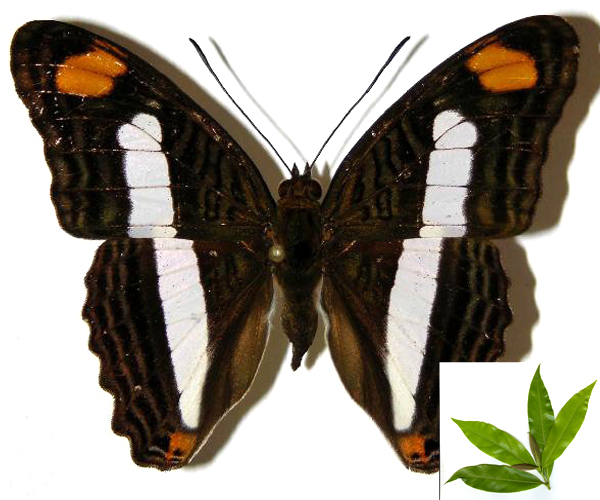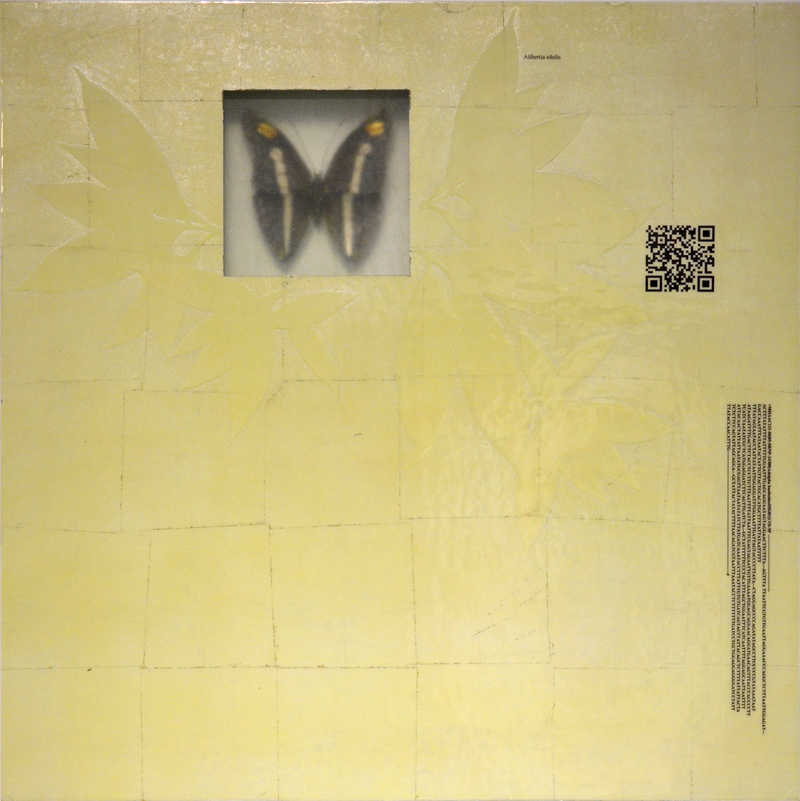Butterflies and Their Food Plants
Adelpha basiloides Butterfly
Alibertia edulis Host Plant
Costa Rica
From the researcher's perspective...
If there was ever a mimetic mess among the adult ACG Nymphalidae, it is Adelpha. Some 16 of the 19 ACG species reared to date look like one or more of each other (especially when flying), except for the two cloud forest species, Adelpha tracta and Adelpha demialba. These two deviate from the lowland generic morph, as is commonplace when there is a group with many lowland species and a few occupying upper elevations. And the “Adelpha color pattern”—here portrayed by Adelpha basiloides—plays out in seemingly infinite minor variation over more than 100 other Neotropical species (with even a few in North America). But among all of these in the ACG, there was one that was common, distinctive for a single trait in the forewing: Adelpha basiloides. The distinctive split white cell at the top of the column of white cells marching up the forewing separates it from all the others.
That is, until we got its DNA barcodes. What the world knows as A. basiloides is clearly two entities in ACG. One, now known as Adelpha basiloidesDHJ01 until we can figure out what it really is, is basically the dry forest species, while Adelpha basiloidesDHJ02 appears to be primarily occupying the interface between rain forest and dry forest. But the two certainly can be found in the same place and the caterpillars feed on the same species of plants.
But what does that orange and white pattern on a dark brown background mean in the life of an Adelpha? It is easy to suspect that it is indeed an aposematic coloration, both because these butterflies fly, float, flap and perch in the vicinity of fly-catching birds that certainly should have the ability to catch Adelpha, yet are ignored by the birds. But this is yet one more case where only detailed, and perhaps somewhat unpleasant, experiments could determine if they are models, mimics or both. It will not be fun to feed them to birds.
DNA Barcode of Adelpha basiloides
Accessed from Barcode of Life Data Systems
MHAAC121-06 | 05-SRNP-24300 | Adelpha basiloidesDHJ01 | COI-5P
AACTTTATATTTTATTTTTGGAATTTGAGCAGGAATAGTAGGAACTTCTTTAAGTTTATTAATTCGTGTTGAATT AGGAAACCCAGGCTCTTTAATTGGAGATGACCAAATTTATAATACTATTGTTACTGCACATGCTTTTATTATAAT TTTTTTTATAGTAATACCTATTATAATTGGAGGATTTGGAAATTGATTAGTACCCCTTATACTAGGAGCCCCAGA TATAGCCTTCCCCCGTATAAATAATATAAGATTTTGACTTCTACCTCCTTCTTTAATTTTATTAATTTCGAGTAG AATTGTTGAAAATGGAGCAGGAACAGGATGAACAGTTTACCCACCCCTTTCATCTAATATCGCTCATGGAGGATC TTCAGTTGATCTAGCTATTTTTTCCCTACATTTAGCTGGAATTTCATCAATTTTAGGAGCAATTAATTTTATTAC AACTATTATTAATATGCGAGTTAATAATATATCTTATGATCAAATACCTTTATTTGTGTGATCAGTAGTTATTAC AGCTCTTTTATTATTACTATCTCTTCCAGTATTAGCAGGAGCTATTACTATACTTTTAACAGATCGTAATTTAAA TACCTCTTTTTTTGATCCTGCTGGAGGAGGGGATCCTATTTTATACCAACATTTGTTT


